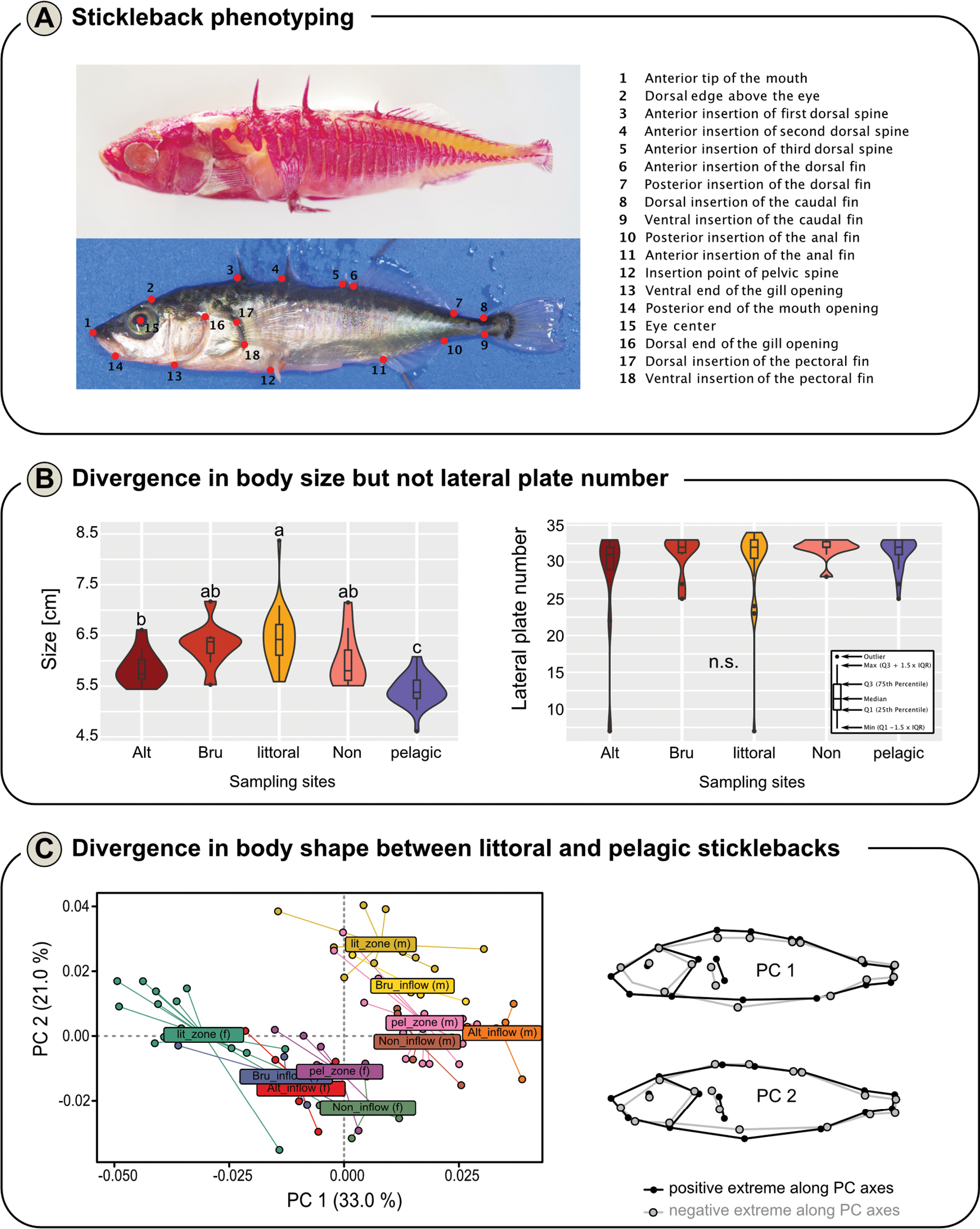
|
||
|
Determination of morphometric and meristic traits in sticklebacks and results of the principal component analysis (PCA) using landmarks A (Top) Stickleback with stained bony structures (for more details, please refer to the text), allowing the determination of the lateral plate number. (Bottom) Position of 18 unique reference points (“landmarks”) on the body for shape analysis. (Right) Description of the individual locations of the landmarks B combined boxplot and violin plot to illustrate variation in size (left) and lateral plate number (right) of sticklebacks from different sampling sites. Lower case letters indicate statistically significant differences (size: ANOVA + Tukey-Kramer HSD post hoc test, lateral plate number: pairwise Steel-Dwass test). Box plots defined in the insert panel on the right C scatterplot showing the first two principal components (PCs), which explain most of the variance of the data (see axis labelling in percent). Sticklebacks were grouped according to sampling site (lit_zone = littoral zone, pel_zone = pelagic zone, Bru_inflow = Brunnisach inflow, Non_inflow = Nonnenbach inflow, Alt_inflow = Alter Rhein inflow) and sex (m = male, f = female). Wireframe graphs of the shape changes along the first two PCs in the PCA are shown on the right. |